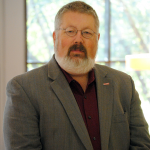Emergency Response in the Arctic (ERA): Investments for Global Capabilities and Local Benefits
The Arctic has been experiencing significantly longer ice-free, navigable maritime seasons, thereby changing the types of activities taking place in Arctic waters. Cruise ships are travelling through the Northwest Passage, oil exploration is occurring off the North Slope of Alaska, and the Northern Sea Route is seeing an increasing volume of cargo ships travelling through it. In Arctic Alaska, these tourism and industrial activities will occur far away from the infrastructure and resources of urban and industrial centers, limiting response capabilities when an emergency occurs in Arctic waters. For all of these reasons, there is a critical need to improve Emergency Response in the Arctic (ERA) to meet the increase in the demand for these capabilities. The scientific contribution of this research is to create prescriptive decision-making models that help to determine where, when, and how to make infrastructure investments to improve global ERA capabilities while also providing benefits to Arctic communities. Because the infrastructure required to improve ERA will be built and maintained in local Arctic communities, this project will involve Arctic stakeholders, including representatives from indigenous communities, to guide the research and help disseminate its results. This project contributes to the NSF's Big Idea on Navigating the New Arctic by: (1) safeguarding human and environmental welfare in increasing ERA capabilities and (2) working closely with local and indigenous populations to co-produce knowledge about the types of benefits potentially provided to communities should ERA infrastructure be located in them. Potential benefits include local management of ERA infrastructure and deployment of resources, training and workforce development opportunities, and improved transportation infrastructure.
This research will create new Operations Research (OR) models that not only account for where and when to make infrastructure investments to improve ERA capabilities but how to properly integrate these investments into the communities where they are located. To accomplish this, this project is creating an innovative methodology where social science research done in conjunction with local Arctic communities is conducted in a way that informs the creation of the OR models and, in later stages of the work, validates their results. Therefore, this research integrates methods across OR and social science that link economic, social, cultural, and technical feasibility and desirability by incorporating expert local knowledge into the planning process. The results of this research will transform our understanding of how to design ERA systems that have positive impacts in the local communities where the supporting infrastructure is built and maintained.
This award reflects NSF's statutory mission and has been deemed worthy of support through evaluation using the Foundation's intellectual merit and broader impacts review criteria.
The objective of this collaborative research between Sharkey (2106726, LEAD, Clemson), Lowe (1825490, UAA) and Birkland (1825486, NCSU) is to create prescriptive models that help to determine where, when, and how to make infrastructure investments in the Arctic that both improve global emergency response (ER) capabilities and provide benefits, as identified through local knowledge, to Arctic communities.
Resources
Breaking the Ice: ISE to Play Key Role in Shaping the Arctic's Future
Changing sea levels open northern shipping lanes but create new logistical challenges.
Research Collaborator(s)
Project Outcomes
This research has helped to improve understanding of how to better respond to large-scale, man-made emergencies, including mass rescue events from cruise ships and oil spills in the Arctic. It has provided analytical tools to assess and optimize response capabilities while accounting for the remoteness of the region and its current infrastructure. These analytical tools allow decision-makers to assess how infrastructure investments in Arctic communities could improve response capabilities. At the same time, the research has assessed how these infrastructure investments could impact the local communities in both positively and negatively.
This research engaged with an advisory committee that represented federal, community, and tTribal agencies across the North Slope Borough, Northwest Arctic Borough, and the Ccity of Nome. This committee helped to identify community consultants to discuss how infrastructure would impact communities of different sizes. Through these discussions, several important themes emerged which included the concepts of dual-use infrastructures and concerns about who would be responsible for the long-term maintenance of new the infrastructure. The novel concept of dual-use infrastructure is defined as infrastructure that helps to improve global emergency response capabilities while also benefiting the local community. The project specifically identified dual-use infrastructure that improved “connectivity,” such as telecommunications and port infrastructure, as being particularly interesting to the communities.
To better assess concerns about long-term maintenance and support of Arctic infrastructure, this research examined a novel game-theoretic framework where various decision-makers, including the federal government, state government, industry, and the community, would invest in the infrastructure and benefit from it. Analysis revealed that the role of the federal government was critical to the long-term operations of the infrastructure, particularly to avoid situations where the local community was unduly burdened by it while others scaled back their investment in and use of the infrastructure.
The project was launched before the COVID-19 pandemic disrupted our work. We learned important project management lessons relating to holding advisory team and research team meetings via teleconferencing. We learned that, with the improvements of telecommunications infrastructure in Arctic Alaska, telepresence tools are an important adjunct to in-person field visits, but these tools do not replace the need for in-person connection and collaboration with community-based research partners.




